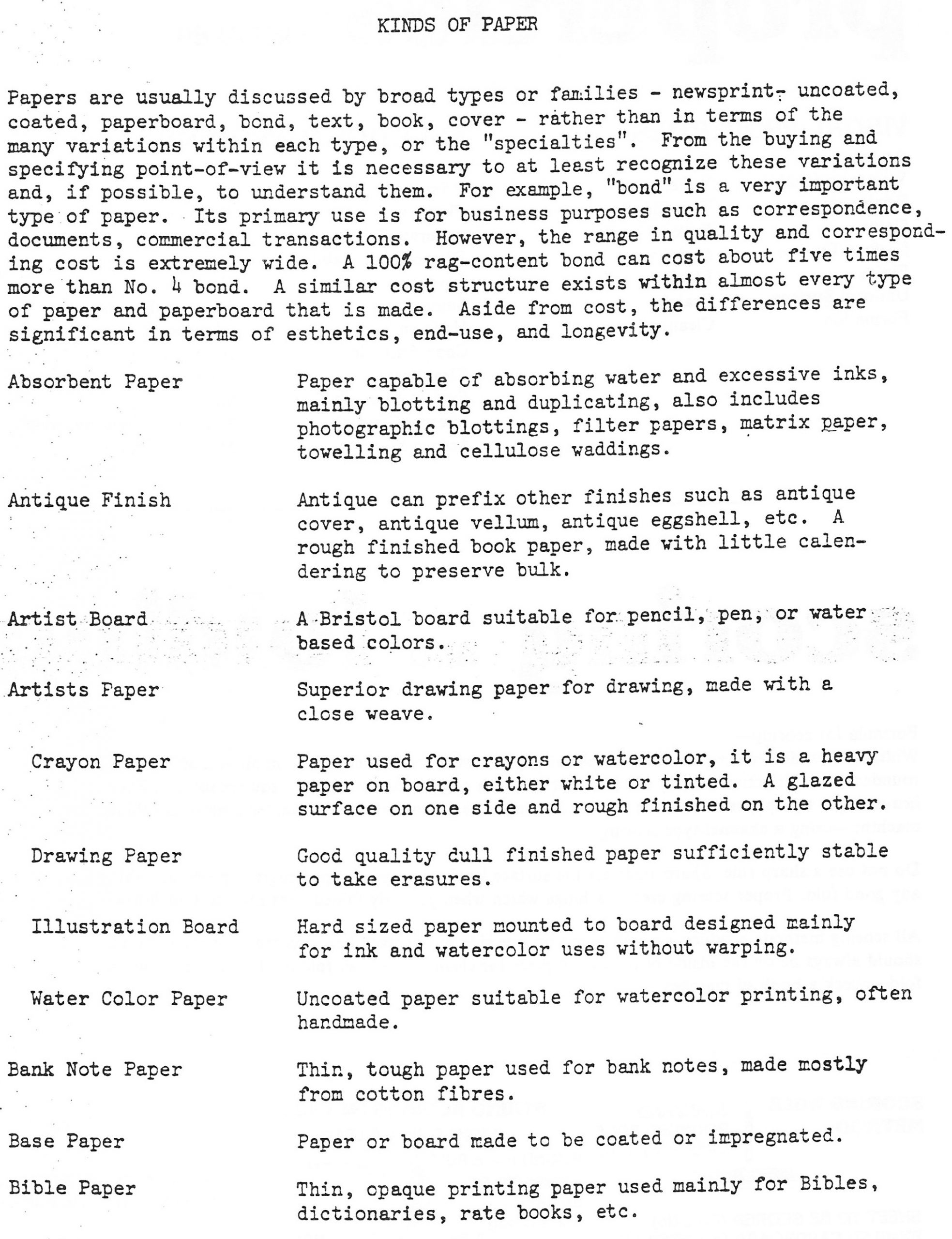
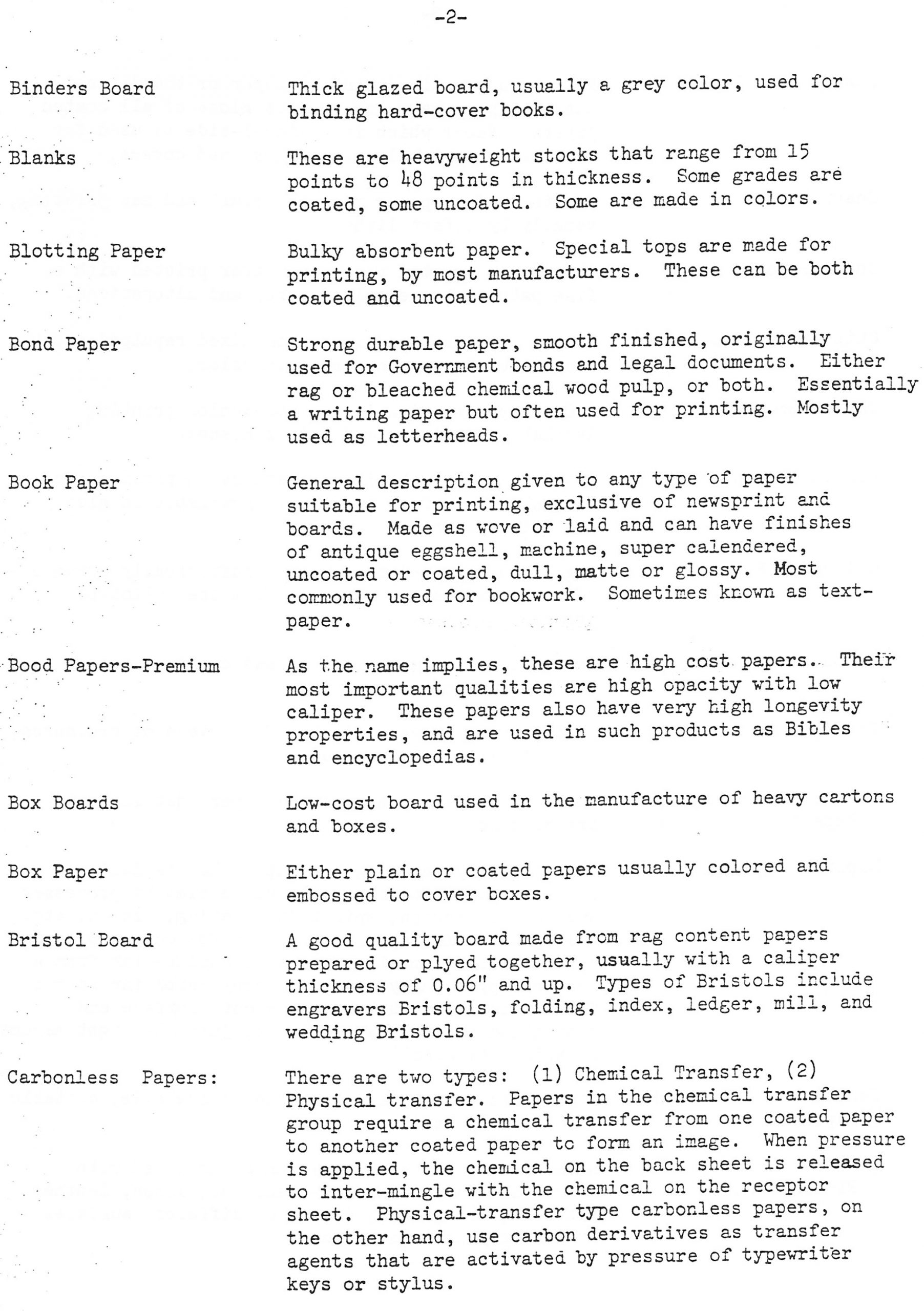

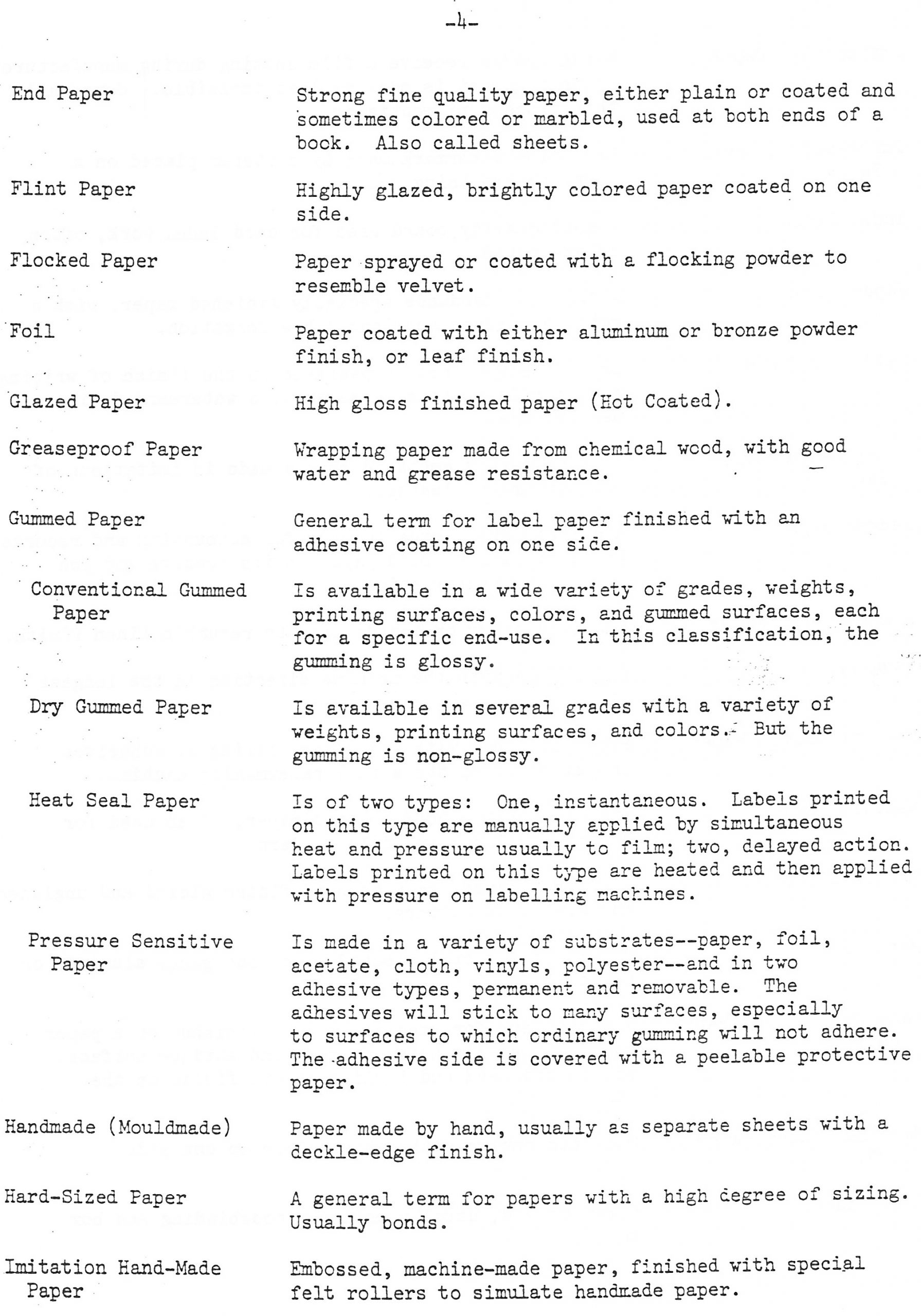

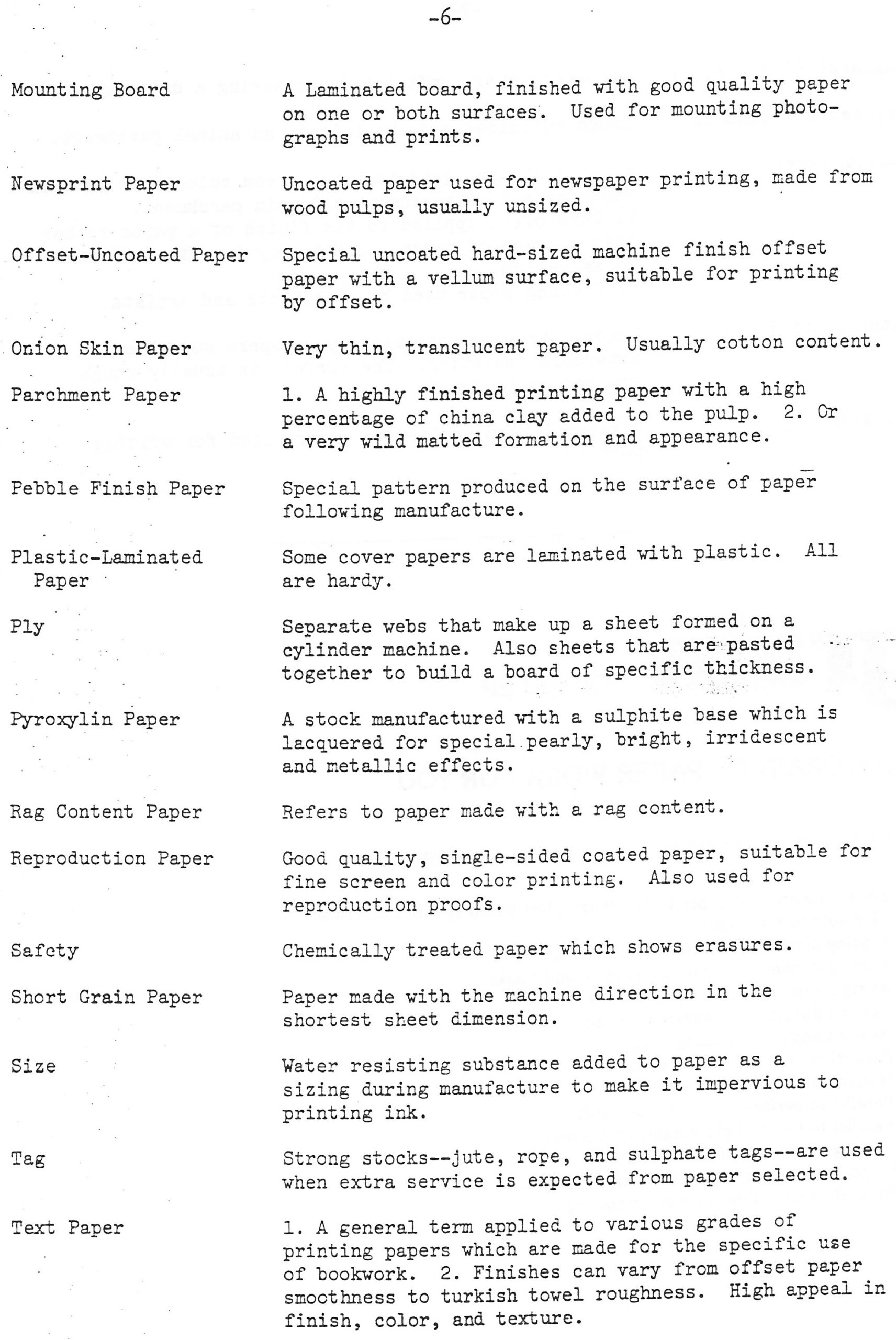
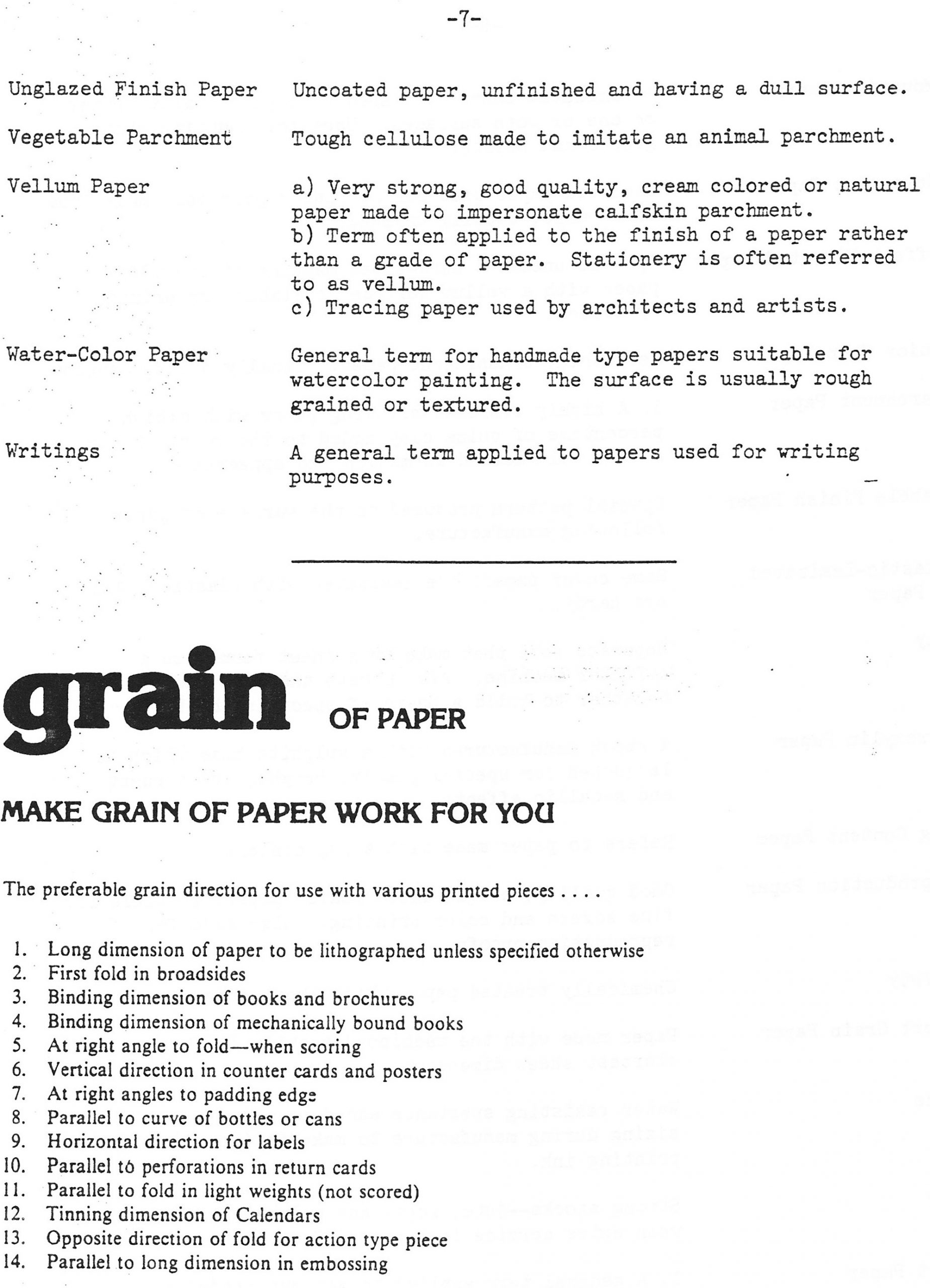
And to Joe VC: note rule #8 above – this is why cutting 11″x17″ paper in half results in 8.5″x11″ paper that goes around a typewriter platen real easy. Factory-cut, wrapped reams are *always* long grain for the given size, so cutting them in half results in short-grain paper. Thus, the same applies to cutting 8.5″x11″ wrapped stock in half to make 5.5″x8.5″ – you’ll get short grain. However, if you were to cut 11×17 in half and then you cut the resulting 8.5×11 in half again, you’d end up with *long grain* 5.5″x8.5″. Make sense? :D
There were certainly more kinds of paper made than I could have imagined. I wonder how many of these are still made today?
Such an array of papers! I’ve heard only about 3 or 4 of them. I vaguely recall being taught about the grain of paper in Jr. Hi. print shop.
Thanks, Ted! Now I understand why that 32# laser paper, cut down to letter sized from 11×17, rolls easier than 32# paper factory cut to letter sized.
The paleontology books I checked out from the college library when I was a little kid featured sections of “plates” (photographic reproductions on relatively thick, high gloss paper) that were my favorite part of the book. (As I said, I was a little kid.) I always assumed the paper for those was called “plate paper,” but apparently not. So what was it? Glazed paper?
You still see this once in a while (for example, in Obama’s latest memoir), but nowadays it seems to be used mainly for color photos, since it’s more common for grayscale photos to be printed alongside the text.
yeah, I had encyclopedias and bibles with “plates” in them (best was when they put a thin sheet of translucent onionskin between the plates). I was a job printer, not a book printer, so I would have just called it a mediumweight c1s or c2s (if coated on both sides) and cursed having to clean up after running talc in the delivery chute to eliminate offsetting. :P
What is the 3 hole punched lined school note paper?
depends on what kind. I’ve seen it made from newsprint, 50# text and 20# bond.